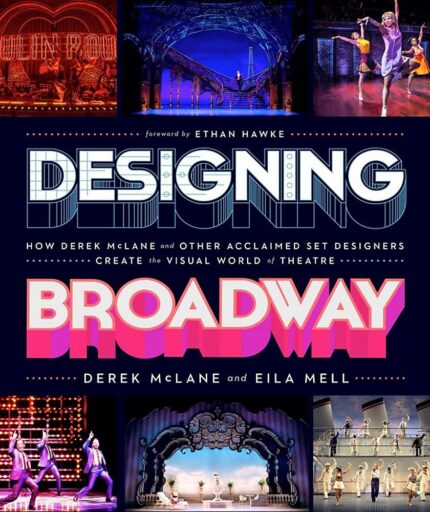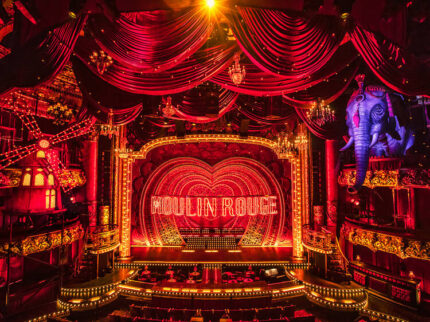 Designing Broadway, by Derek McLain and Eila Mell, Running Press (Hatchette Book Group), 272 pages; list price $45, $33.20 Amazon, used copies $30.
Designing Broadway, by Derek McLain and Eila Mell, Running Press (Hatchette Book Group), 272 pages; list price $45, $33.20 Amazon, used copies $30.
By Bill Hirschman
As a rule, responsible critics strive to avoid unrestrained superlatives in their reviews, but sometimes the work deserves it.
So, Designing Broadway, which looks like a coffee-table book jammed with gorgeous color photos and insider illustrations, is one of the finest examinations for both artists and people sitting in the seats for detailing the actual creative process in theater.
Veteran scenic designer Derek McLane and interviewer Eila Mell have produced a stunningly effective insider volume documenting the integral collaboration of directors, playwrights, lighting designers, sound designers, costumers and even a few actors creating vivid environments that expand and elevate the initial vision.
Most of the volume delivers one or more vibrant photos, initial sketches and ground plans for each of more than 90 productions, accompanied by interviews with the artists involved in their creation.
The much-honored McLane’s 30-year career has delivered 350 designs for stage, film, television and Las Vegas productions, including the lush, lavish 2019 Moulin Rouge (which gets a chapter all its own including a stunning quadruple-page fold out.) His work goes back decades, yet this volume published in November includes his 2022 designs for MJ the Musical.
But the journey here generously includes plenty of work by (and interviews with) acclaimed colleagues such as John Lee Beatty, Beowulf Boritt, the late Eugene Lee and classic designs from the current dean of the profession, Robin Wagner. Here’s David Korins discussing the evolution of the set for Hamilton, which changed from the initial idea. Rachel Hauck discusses how her design for Hadestown altered as it moved from one venue to another to another.
The book is also divided into sections reflecting techniques, visions and concepts such as surrealism in Natasha, Pierre & the Great Comet of 1812, projections used in The Who’s Tommy, the immersiveness of Slave Play, the use of color in Hairspray, realism in Burn This (both the 1987 and 2019 versions), even discussing the specific use of patterns. One section looks at two designs for August Wilson plays.
Again, this is more than a picture book, although you could be happy just scanning the photos. While McLane contributes plenty of his insights, Mell’s interviews show how designers influenced the direction of a show, how their designs inspired changes of scripts in development, how the lighting and costuming gurus influenced and changed McLane’s initial designs, how all these pieces interacted to create the overall illusion. Among the scores of interviewees are McLane’s frequent and admiring collaborators such as the playwright/director Moises Kaufman and actor-director Ethan Hawke.
While the texts will be profoundly educational, the texts are not so abstract that civilians will be bored or lost. Indeed, the book includes a few boxes explaining such basic definitions and concepts as cycloramas, or upstage and downstage.
On top of all that, the book is beautifully laid out by a crew headed by Alex Camlin.
Since the discussion reflects the very essence of how all theater is made, the book ought to be required reading in college theater programs across the country, regardless of what a student is focused on.
For many years, the best books on the subject may have been Designing for the Theatre: A Memoir and a Portfolio (1965) by the great Jo Mielziner, famed for A Streetcar Named Desire and Death of a Salesman; and The Theatre Art of Boris Aronson (1987), designer of Fiddler on the Roof, Follies and Company.
These volumes preserved those masters’ work long after their sets were turned to scrap wood. But this deserves a spot at least alongside, if not on top of, that stack.








 A PaperStreet Web Design
A PaperStreet Web Design
